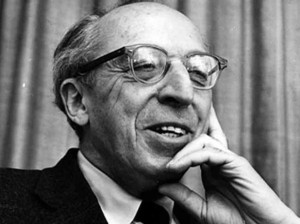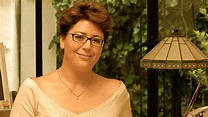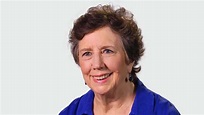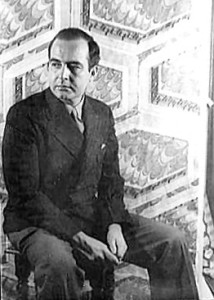Davies Symphony Hall, San Francisco, April 10, 2025 — This concert was interesting, innovative, excellent. The conductor was Marin Alsop. It was her first appearance conducting the San Francisco Symphony on a subscription program. Her conducting is expressive through arm and hand movements. Her body language is clear and powerful. It was exceptional. The orchestra was with her as she led them in compositions new to many in the audience.
The concert opened with Antropolis, by Gabriela Ortiz. It is fantastic. The title is an invented name for the sounds of Mexico City. It is best to quote the composer: “a piece that narrates the sound of the city through its dance halls and nightclubs…I wanted to pay a very personal tribute to some of those antros or emblematic dance halls of Mexico city that left a special sonorous imprint in my memory. These cabarets or dance halls represent the nostalgia for rumberas and live dance orchestras, such as El Bombay, where it is said that Che Guevara would twirl, or the Salon Colonia, which seems to have come out of dreams taken from a film of the Golden Age of Mexican cinema…”
This music’s rhythms are sensational; the percussion section has so many different kinds of percussion instruments. They include timpani, cymbals, suspended cymbal, cowbell, almglocken, claves, maracas, guiro, metal guiro… Well, there are eleven more, but the list will take over the whole article. Only ten minutes long, I would have gladly heard it again. The composer, among other awards, was the first woman composer “inducted into the Collegio Nacional, 2022. She now holds the “composer’s chair at Carnegie Hall.” The SFS musicians had smiles all over their faces; something challengingly different. Musicians and audience had a great time.
 Gabriela Montero, composer/pianist
Gabriela Montero, composer/pianist
Piano Concerto No. 1, Latin, by Gabriela Montero; she played the piano in her Concerto. Her compositions often have a political, humanitarian purpose or represent events in Venezuela, her home country. She composed Ex Patria for piano and orchestra in recognition of the 19,336 individuals who were murdered, in 2011. She wrote Canaimo: A Quintet for Piano and Strings, 2024. She received the Vaclav Havel Prize for Creative Dissent from the Human Rights Foundation. The Quintet was premiered at the ceremony. The composer describes her thoughts: “European formalism and the informality of Latin America’s rich, rhythmical identity merge in a complementary dance of both the joyful and macabre. Writing my concerto, I set out to describe the complex and often contradictory character of Latin America, from the rhymically exuberant to the forebodingly demonic… ” The Concerto has three movements; Mambo, Andante moderato, Allegro venezolano. There is a strong shift from the exciting dance music of happy people to the danger of the evil forces which, in the real world, are dedicated to destroy that delightful dance and, as the composer wrote, holds “our continent hostage to tyranny in its multiple guises.” This very special Concerto puts reality into music that is as exquisite as it is frightening. The audience’s enthusiastic applause led the composer/pianist to improvise an encore which might have been imagined by Haydn.
 Aaron Copland, composer (1900-1990)
Aaron Copland, composer (1900-1990)
Percussion was a theme of the evening. Aaron Copland wrote Fanfare for the Common Man for a project from the Cincinnati Symphony. Eighteen composers were invited to create a fanfare for percussion and brass. The fanfares would open the Cincinnati Symphony’s programs, in 1942-1943. American citizens were fighting in World War II. The Symphony’s conductor, Eugene Goossens’ intention was to create patriotic feelings. Copland said he had thought of different themes for his fanfare, but he chose the “common man, after all, who was doing all the dirty work in the war and the army….He deserved a fanfare.” The piece was played with care. It was not rushed; the brass announces pride and determination. It is only three minutes, but it delivers its salute majestically.
Joan Tower’s three minute Fanfare for the Uncommon Woman No. 1 was a perfect parallel. It was also written for brass and percussion, but her list of percussion was longer. It includes snare drum, medium bass drum, cymbals, high and medium gong, tam-tam, tom-toms, large bass drum, temple blocks and triangle. Copland had bass drum and tam -tam. Tower’s Fanfare premiered in 1987, with the Houston Symphony. Her idea caught on; there are now six Fanfares for the Uncommon Woman. No. 1 was dedicated to Marin Alsop. Tower kept on with the Fanfares, and dedicated each one to an adventurous woman who take risks. Four of the six are scored for three trumpets, four horns, three trombones, tuba, and percussion. That is the instrumentation of Copland’s Fanfare. The second one (1989) added one percussion. The third one, debuted 1991, has a double brass quintet. The fourth and sixth are scored for a full orchestra; the fifth was commissioned by the Aspen Music Festival, 1993.I listened to find the differences between them. It seems to me that the percussion instruments added decoration. The light, sort of circular sounds, were more delicate and used the diverse percussion instruments to give Tower’s more of a universal sound. They added sounds that might have come from South America, possibly Asia. Actually Copland’s and Tower’s make a good pair.
The program closed with Symphony No. 1, Opus 9, by Samuel Barber. He wrote it in 1935-36, but revised it, in 1943. The SFS played it beautifully and kept the emotional aspects on the surface. Barber did not hide from the dark and occasional light moods of his four movement Symphony. The movements are not separated with pauses. Instead, like a view seen over hills and fields, the view encompasses the variations into a whole, going into darkness and climbing up to sunlight. There are pieces by Barber that bring me down. Then, I need to listen to a different selection. The strength that Marin Alsop and the SFS brought to Barber’s Symphony No. 1 was a success that can open one’s heart.

 Gabriela Ortiz, Composer
Gabriela Ortiz, Composer Joan Tower, composer
Joan Tower, composer Samuel Barber, composer
Samuel Barber, composer